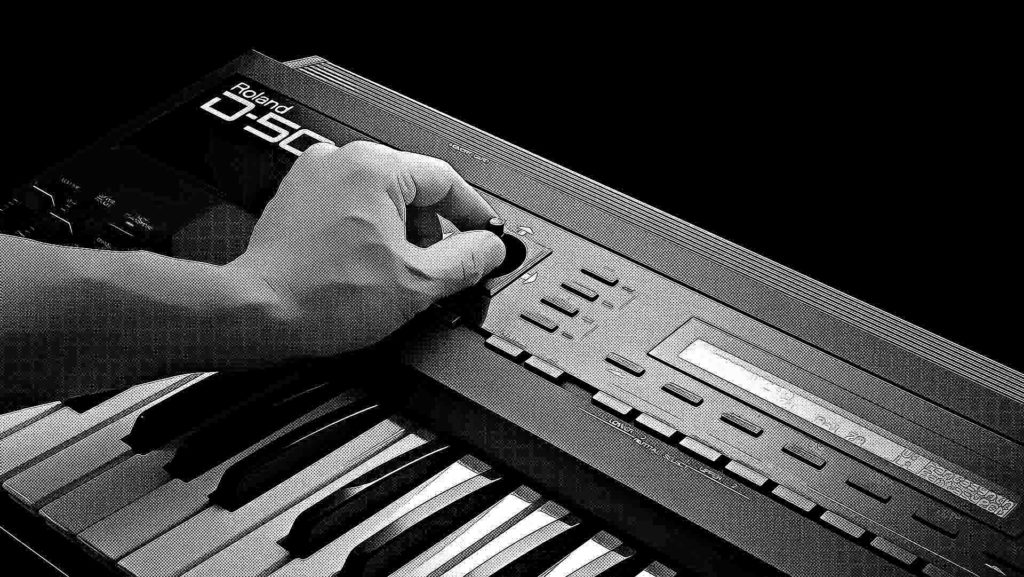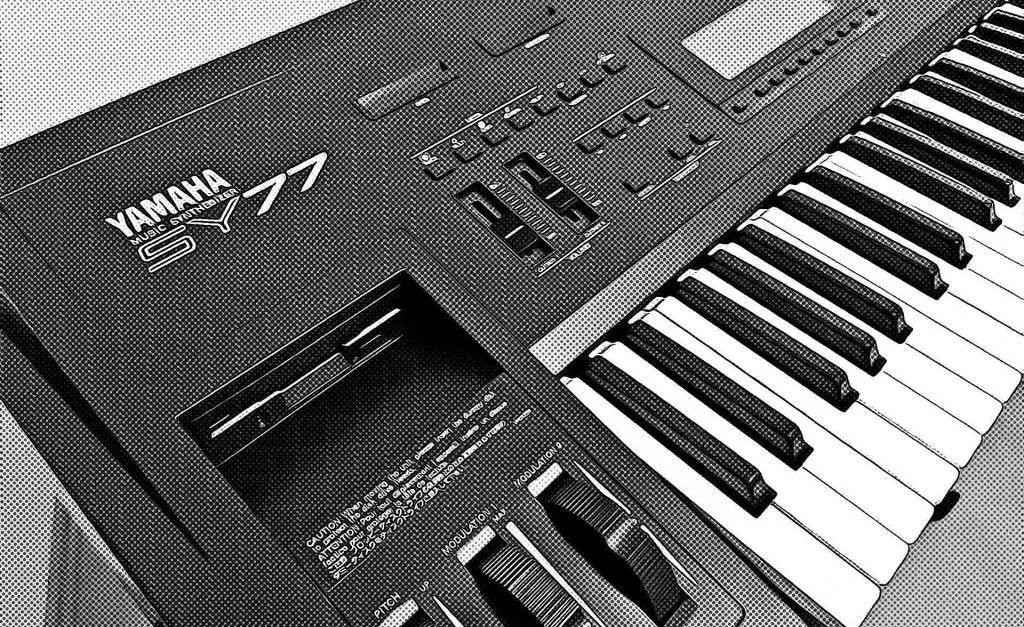Linear Arithmetic Synthesis or short said LA Synthesis is a term born in Roland Corporation labs for defining that type of digital synthesis developed for the D-50 synthesizer and subsequent keyboards and sound modules. Simply put, “linear arithmetic” means that the synthesis is digital (linear) and also summing (arithmetic). LA synthesis uses sampled attacks combined with synthesized wave forms for the other portions of each note. This allows efficient use of sample memory, as well as creative combinations of unrelated attacks and wave forms.

As we’ve mention above, the technology of linear arithmetic synthesis was implemented for the first in the Roland D-50 synthesizer, in 1987. At that time, re-synthesizing samplers were made with high costs, so Roland came with this solution and introduced a machine that would be very easy to program, sound realistic, and still sound like a synthesizer. Previously, Yamaha conquered the world market lead with their DX7 FM synth, which was extraordinary at percussive sounds the part of things that Roland’s synthesizers using subtractive synthesis were less good at.
What is LA Synthesis: Table of Contents
How LA Synthesis / Linear Arithmetic Synthesis Works?
In LA Synthesis / Linear Arithmetic Synthesis, sampled attack waveforms are combined with synthesized harmonic partials. This creates a complex waveform that is then modified using various parameters to create a unique sound. The D-50 used four partials, each with its own set of parameters, to create a wide range of sounds.
The partials in LA Synthesis are made up of attack samples, harmonic partials, and noise. The attack samples are short, sampled sounds that are used to create the attack portion of a note. The harmonic partials are synthesized waveforms that are used to create the sustain portion of the note. Finally, the noise is used to add texture and complexity to the sound.
The parameters used in LA Synthesis include envelope generators, filters, and LFOs (Low-Frequency Oscillators). These parameters can be adjusted to modify the sound of each partial, creating a wide range of unique sounds.
The Benefits of LA Synthesis / Linear Arithmetic Synthesis
One of the main benefits of LA Synthesis is the efficient use of sample memory. By combining sampled attacks with synthesized waveforms, LA Synthesis creates a unique sound while using less memory than traditional sample-based synthesis.
Another benefit of LA Synthesis is the ability to create a wide range of sounds, from realistic instrument sounds to experimental and unique sounds. The combination of sampled attacks and synthesized waveforms allows for a wide range of creative possibilities, making it a popular choice for musicians and sound designers.
In addition, LA Synthesis is relatively easy to program, with intuitive and user-friendly interfaces. This has made it a popular choice for musicians and sound designers who want to create unique sounds without spending a lot of time programming.
The Legacy of LA Synthesis / Linear Arithmetic Synthesis

LA synthesis / Linear Arithmetic Synthesis was a game changer for Roland, as it opened up new possibilities for creating sound. LA synthesis allowed for a more realistic emulation of real instruments, while also giving synthesists the ability to create completely new and unique sounds. LA synthesis is still used today in various forms, and has influenced the sound of many genres of music, from pop to film scores.
The D-50 was just the beginning for LA synthesis, as Roland continued to refine and develop the technology in subsequent keyboards and sound modules. The Roland D-550 rackmount module, released in 1987, was essentially a D-50 without the keyboard, and offered the same powerful synthesis engine in a more compact form. Later, Roland released the D-70, which expanded on the capabilities of the D-50 with more waveforms, more multitimbrality, and a larger selection of effects.
LA synthesis also influenced the development of other digital synthesis technologies. One notable example is the use of wavetables in the popular Waldorf wavetable synthesizers, which use a similar approach to LA synthesis by combining sampled attacks with synthesized waveforms. Wavetable synthesis has since become a staple in the world of digital synthesis, and owes its roots to the pioneering work of LA synthesis.
Similar Concepts with LAS / LA Synthesis / Linear Arithmetic Synthesis

Yamaha’s SY77, the rack-mount equivalent TG77, and successor SY99 introduced Advanced Wave Memory 2 (AWM2), a system that allows for the playback and digital filtering of samples. These synths also enabled AWM2 samples to be used as transients to Advanced FM (AFM) synth sounds, looped oscillators in their own right, or even as modulators of AFM carriers.
Like LA synthesis, this system enabled more realistic modeling of physical instruments and opened up new possibilities for synthesis when combined with FM. The SY99 appeared to be the last FM workstation by Yamaha, as the later FM synth FS1R did not feature AWM. This meant that the SY99 was the last synth in which AWM and FM could be combined. The Montage, released in 2016, combines a later version of AWM2 with FM-X, which is an offshoot of the FM engine from FS1R but without the latter’s Formant Synthesis. However, the Montage does not allow samples to be used as modulators, as the 77/99 series did.
AWM sampling on its own has become a mainstay of subsequent flagship Yamaha products, such as the Yamaha EX5, Motif, and Montage lines. These synths still use the umbrella term AWM2, although the engine’s details have changed many times.
In addition, Casio has developed a similar synthesis system known as Advanced and High-Quality Large Waveform, also called AHL, for use on their portable keyboard line. Previous Casio keyboard models instead use ZPI, a similar but more advanced system. AHL was initially a simplified version of the previous ZPI, in which both are mostly optimized for acoustic instrument samples.
Ensoniq’s SQ-80 referred to the same technique as Cross Wave Synthesis, and Kawai’s K4 referred to it as Digital Multi Spectrum. All of these systems allow for the efficient use of sample memory and the creative combination of unrelated attacks and waveforms to create new and innovative sounds.

